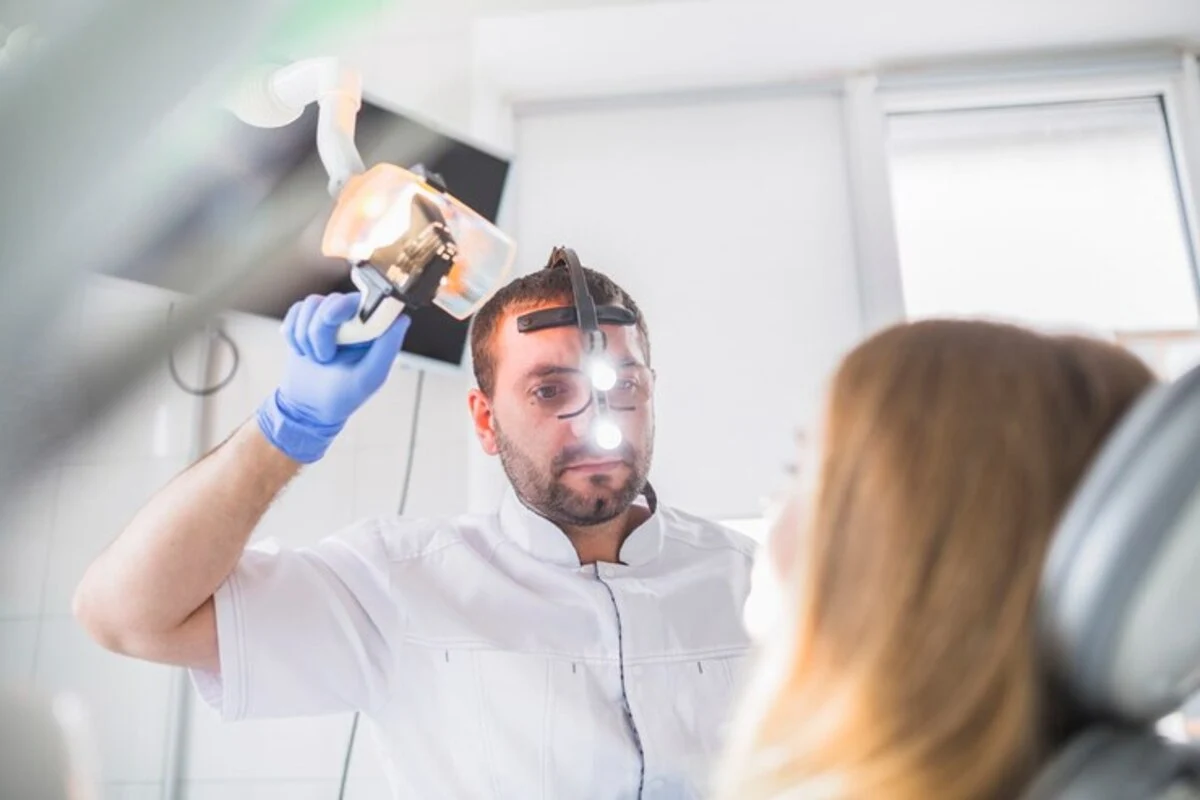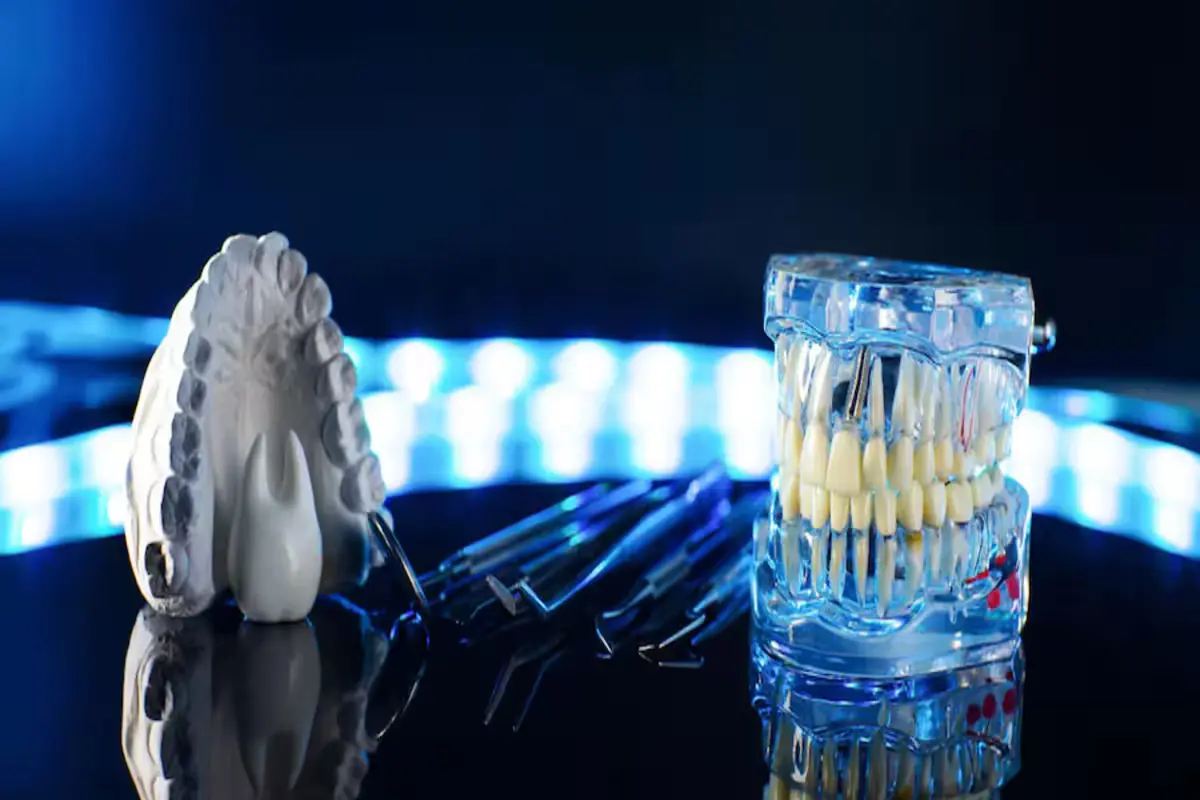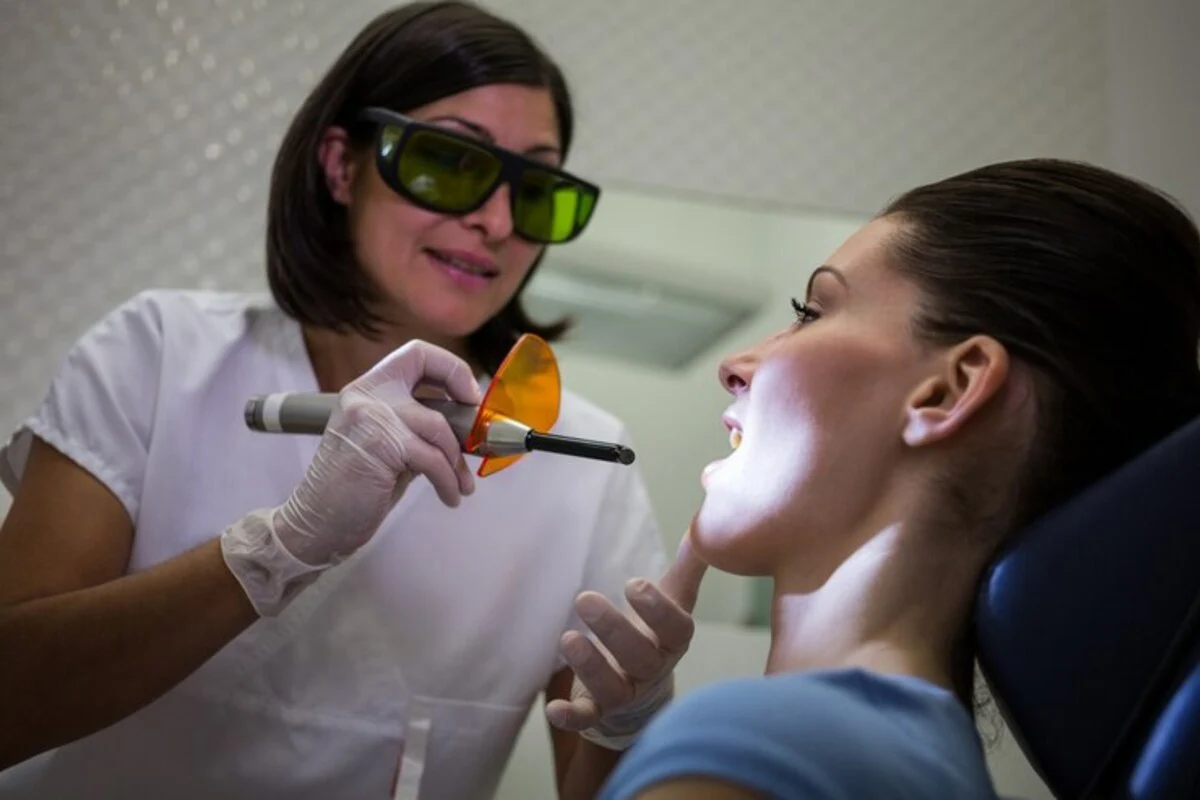Biomimetic dentistry, rooted in the principle of imitating the natural biological processes of the human mouth, has transformed dental care by emphasizing conservation and regeneration over replacement and repair. This article is written by Fortune smiles dental care clinic to give professional information in this field to you.
Origins and Early Developments in Biomimetic Dentistry
This section explores the origins and early developments of biomimetic dentistry, illustrating how foundational ideas shaped the modern practices we see today.
Definition and Conceptual Framework
The term “biomimetic” merges “biology” with “mimesis,” meaning to mimic life. In dentistry, this approach involves studying the natural properties of teeth and surrounding structures to develop materials and procedures that replicate their natural function and aesthetics. The foundational goal is to preserve as much of the natural tooth structure as possible, promoting longevity and sustainability in dental treatments.
Historical Roots
The roots of biomimetic dentistry can be traced back to the early 20th century when dental pioneers began to consider the implications of tooth preservation and the potential for materials that could integrate seamlessly with natural tooth structures.
Read it: Latest Advances in Dental Bridges
Early efforts were focused on understanding the composition and wear resistance of natural enamel and dentin, setting the stage for future innovations.
Evolution of the Concept
Throughout the mid-20th century, developments in dental materials science, such as the introduction of composites and adhesives, marked significant milestones in the biomimetic approach.
Researchers and clinicians experimented with various formulations to enhance the performance and aesthetic outcomes of dental restorations. The goal was to develop materials that could not only match the appearance of natural teeth but also their mechanical properties and durability under the unique conditions of the oral environment.
Influence of Technology
Advancements in technology, particularly in digital imaging and manufacturing, played a crucial role in the early adoption of biomimetic methods. These technologies allowed for more precise measurements and customization of dental restorations, facilitating a closer mimicry of natural dental structures.
Techniques such as CAD/CAM (Computer-Aided Design and Computer-Aided Manufacturing) became instrumental in designing and creating dental prosthetics and restorations with unprecedented accuracy.
Key Figures and Contributions
Several key figures have been instrumental in advancing the biomimetic dentistry field. These pioneers not only contributed through direct research and development but also through educating future dentists on the importance of a biomimetic approach.
Read it: Biomimetic Approach to Dental Implants
Their teachings and publications have been pivotal in disseminating the concept across the global dental community, fostering a shift towards more conservative and nature-inspired dental practices.
The early developments in biomimetic dentistry laid the groundwork for a revolutionary change in how dental care is approached. From the initial focus on understanding the natural properties of dental tissues to the integration of advanced materials and technologies, the origins of biomimetic dentistry highlight a persistent quest to replicate the sophistication of nature in dental treatments.

This historical perspective sets the stage for exploring further advancements in materials and techniques in the subsequent sections, showcasing how the field has evolved and what it has achieved over the decades.
Advancements in Materials and Techniques
As biomimetic dentistry evolved, significant advancements in materials and techniques have been pivotal in enhancing the ability of dentists to provide treatments that closely mimic the natural properties of dental tissues.
Read it: Introduction to Clear Aligner: What It Is and How It Works
This section explores the key developments in these areas, showing how they have contributed to the practice of biomimetic dentistry and improved patient outcomes.
Innovative Dental Materials
The progression in dental materials has been instrumental in the advancement of biomimetic dentistry. Researchers have developed materials that not only aesthetically resemble natural teeth but also mimic their biological properties and responses to environmental stresses.
- Composite Resins: Modern composite resins have evolved significantly, with improvements in their composition to better mimic the color, translucency, and wear resistance of tooth enamel. These materials are now more durable and capable of withstanding the biting forces they are subjected to, reducing the need for future replacements.
- Ceramics: Dental ceramics have seen remarkable improvements, particularly in their strength and aesthetic qualities. Materials such as zirconia and lithium disilicate offer options that are both visually appealing and extremely resilient, suitable for use in creating crowns and onlays that are indistinguishable from natural teeth.
- Glass Ionomers: These materials have been refined to provide better fluoride release, which is crucial for preventing decay around restorations. Their enhanced bonding properties also ensure a tighter seal to the natural tooth, minimizing the risk of bacterial invasion.
- Bioactive Materials: Perhaps the most promising advancement in dental materials is the development of bioactive products that can actively contribute to tooth repair. These materials not only restore the tooth structure but also promote remineralization, helping to integrate the restoration with the natural tooth and maintain its vitality.
Technological Advancements in Dental Techniques
The application of cutting-edge technologies has significantly refined the techniques used in biomimetic dentistry, allowing for more precise and less invasive treatments.
- Digital Imaging and 3D Scanning: These technologies provide detailed views of the oral cavity, allowing for precise planning and customization of treatments. The ability to create accurate 3D models of a patient’s teeth enables the fabrication of restorations that fit perfectly, minimizing adjustments and discomfort.
- Laser Dentistry: Dental lasers have revolutionized various aspects of biomimetic dentistry, from cavity preparation to gum contouring. Lasers offer a more precise and less traumatic method for removing decayed tissue and reshaping gums, preserving more of the healthy tissue.
- CAD/CAM Technology: This technology has been transformative, allowing for the design and fabrication of dental restorations on-site in the dental office. This not only speeds up the process of getting a crown or onlay but also increases the accuracy of the fit, which is crucial for the long-term success of the restoration.
Impact on Clinical Practices
The advancements in materials and techniques have profoundly impacted clinical practices in biomimetic dentistry. Dentists are now able to provide treatments that are not only more effective but also more conservative and patient-friendly.
- Minimally Invasive Procedures: With better materials and precise application techniques, the amount of tooth structure that needs to be removed for restorations has significantly decreased. This conservative approach helps maintain the strength and integrity of the natural tooth, promoting its longevity.
- Enhanced Aesthetics and Function: The new materials and techniques allow for restorations that not only look natural but also function like natural teeth, enhancing patient satisfaction and overall oral health.
The advancements in materials and techniques in biomimetic dentistry have not only revolutionized the way dental treatments are carried out but have also significantly improved the outcomes for patients.
Read it: Revitalizing Your Smile: A Comprehensive Guide to Dental Inlays
These developments continue to push the boundaries of what is possible in mimicking natural dental tissues, leading to more effective, durable, and aesthetically pleasing treatments. As we look to the future, these advancements hold the promise of even more innovative solutions in the field of biomimetic dentistry.
Milestones in Biomimetic Research and Practice
The journey of biomimetic dentistry is marked by significant milestones that have shaped its development and widespread adoption. This section outlines key breakthroughs in research and practice, illustrating how each milestone has contributed to the evolution of biomimetic approaches in dental care.

Development of Adhesive Dentistry
One of the foundational milestones in biomimetic dentistry was the development and refinement of dental adhesives. In the early days, the ability to bond dental materials directly to tooth structure revolutionized dental restorations by supporting the conservation of tooth tissue and improving the longevity and aesthetics of fillings and crowns.
- 1970s-1980s: The introduction of reliable dental adhesives marked the beginning of modern adhesive dentistry, allowing for the development of techniques that are less invasive than their predecessors. These adhesives enabled the first true attempts at mimicking not only the appearance but also the function of natural tooth structures.
- 1990s: Improvements in adhesive technology, including the introduction of multi-component systems that could bond both to enamel and dentin, significantly enhanced the performance and durability of restorative materials.
Advancements in Dental Composites
The evolution of dental composites has been critical in allowing dentists to provide restorations that not only look natural but also withstand the forces of chewing without failing prematurely.
Read it: The Ultimate Guide to Understanding Dental Crowns
- 2000s: The introduction of nanocomposites provided materials with finer particles, allowing for smoother, more polishable surfaces that mimic the natural luster of tooth enamel. These materials also offered improved strength and wear resistance.
- 2010s: Developments in composite layering techniques enabled the more effective imitation of tooth translucency and color depth, providing results that are visually indistinguishable from natural teeth.
Innovations in Digital Dentistry
Digital dentistry technologies have been pivotal in transforming dental practices, allowing for precise diagnostics, planning, and execution of biomimetic principles.
- CAD/CAM Systems: The adoption of CAD/CAM systems in dental offices enabled the rapid on-site creation of custom dental restorations. This technology not only speeds up the treatment process but also increases the accuracy and fit of the restorations.
- 3D Printing: More recent advances in 3D printing technology have begun to make their mark on biomimetic dentistry by allowing even more complex and precise fabrication of dental materials and restorations.
Bioactive Materials and Regenerative Dentistry
The ongoing research into bioactive materials and regenerative techniques marks a new frontier in biomimetic dentistry.
- Bioactive Materials: These materials not only restore the function and aesthetics of teeth but also actively contribute to the health of the surrounding oral environment by facilitating natural processes such as mineral deposition and tissue regeneration.
- Regenerative Procedures: Techniques such as pulp capping and the use of stem cells to regenerate dental tissues are being researched and gradually introduced into practice, promising a future where dentistry not only repairs but also rejuvenates oral tissues.
Each milestone in the history of biomimetic dentistry represents a leap forward in our ability to provide dental care that truly emulates the natural properties of teeth. From the early developments in adhesives and composites to the cutting-edge innovations in digital and regenerative dentistry, the field has continually evolved to better meet the needs of patients.
Read it: Dental Onlays: Revolutionizing Tooth Restoration
These milestones not only highlight the progress made but also point to the potential for future advancements that will further revolutionize dental care. As biomimetic dentistry continues to develop, it promises to deliver even more sophisticated solutions that blend seamlessly with the body’s natural biology, enhancing both function and aesthetics in dental care.
The Current State and Future Prospects of Biomimetic Dentistry
As we explore the present landscape and look toward the future of biomimetic dentistry, it’s clear that this field continues to be at the forefront of dental innovation.
Today, biomimetic dentistry not only addresses functional and aesthetic needs but also increasingly incorporates aspects of sustainability and patient-specific customization. This section discusses the current state of biomimetic dentistry and its promising future directions.
Current Applications and Practices
Biomimetic dentistry today is applied through a variety of advanced materials and techniques that are routinely used in dental practices worldwide. The emphasis is on treatments that are not only effective and durable but also as minimally invasive as possible.
- Widespread Use of Advanced Materials: Materials like advanced ceramics and improved composite resins are now standard options for restorations that need to withstand significant wear while offering exceptional aesthetics.
- Minimally Invasive Techniques: Techniques such as inlays and onlays are preferred over full crowns whenever possible to preserve natural tooth structure. Adhesive bonding methods have improved to the extent that they significantly enhance the longevity and success of such conservative treatments.
- Precision and Customization through Digital Dentistry: Digital impressions and computer-aided design/manufacturing (CAD/CAM) are nearly ubiquitous in modern dental practices, allowing for restorations that are precisely tailored to individual patient anatomy.
Integration of Sustainability
An emerging trend in biomimetic dentistry is the integration of sustainable practices. This involves the use of biocompatible materials that are safe for the patient and the environment and techniques that reduce waste and energy consumption.
Read it: Revolutionizing Restorative Dentistry: Biomimetic Applications in Dental Onlays
- Eco-friendly Materials: Research is increasingly focusing on developing materials that are not only effective in mimicking natural tooth properties but are also manufactured through processes that minimize environmental impact.
- Energy Efficiency: New technologies are being developed to decrease the energy use of dental devices and equipment, reflecting a broader commitment to sustainability within the healthcare sector.
Future Prospects
The future of biomimetic dentistry holds exciting possibilities, with ongoing research aimed at enhancing the ability to replicate and restore natural dental functions more effectively and sustainably.
- Advanced Bioactive Materials: Future developments are expected to bring materials that can actively participate in healing and regeneration, potentially reducing the need for interventions as the materials help the natural dental tissues to repair themselves.
- Personalized Medicine: As genetic profiling and personalized medicine advance, biomimetic dentistry will increasingly be able to tailor treatments based on individual genetic profiles, optimizing outcomes and reducing the risk of adverse reactions.
- Integration with Systemic Health: Biomimetic dentistry is likely to play a more integral role in overall health care, with dental professionals working closely with other healthcare providers to ensure that oral health interventions support systemic health, reflecting the concept of the mouth as a gateway to body health.
Biomimetic Dentistry at Fortune Smiles Dental Care
At Fortune Smiles Dental Care, we are committed to incorporating the latest advancements in biomimetic dentistry into our practice. We utilize state-of-the-art materials and technologies to ensure that our treatments not only restore dental health but also emulate natural dental aesthetics and functions.
Our approach is tailored to each patient, ensuring that all treatments are as minimally invasive as possible while achieving the best possible outcomes. As we look to the future, we continue to invest in training and technologies that will allow us to lead the way in sustainable and innovative dental care.
Conclusion
The field of biomimetic dentistry is poised for continued growth and innovation. With each advancement, we move closer to a model of dental care that fully replicates the natural form and function of dental tissues, providing patients with solutions that are not only effective and aesthetic but also sustainable and tailored to their unique needs.
The future of biomimetic dentistry is bright, with potential developments that promise to further transform the landscape of dental care, making it more integrated, personalized, and focused on long-term health and well-being.

